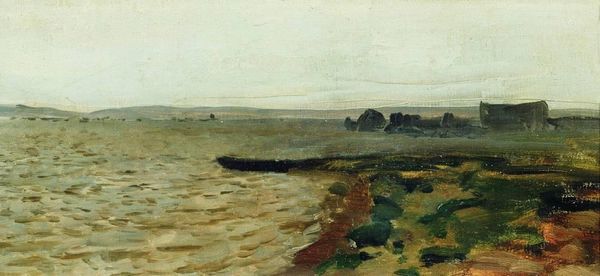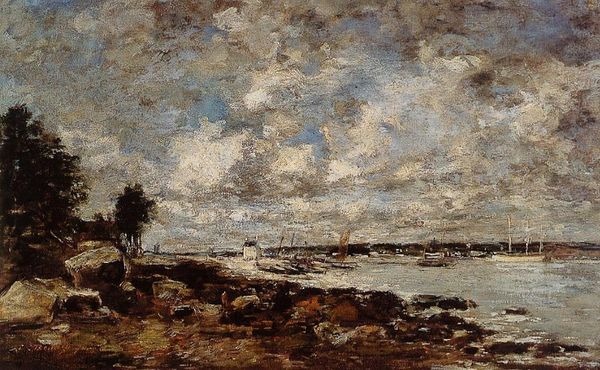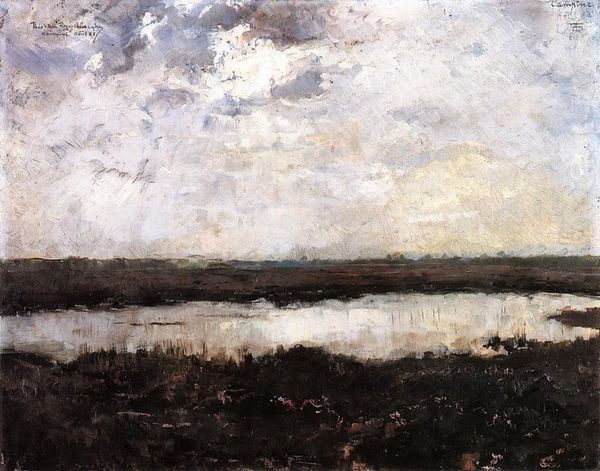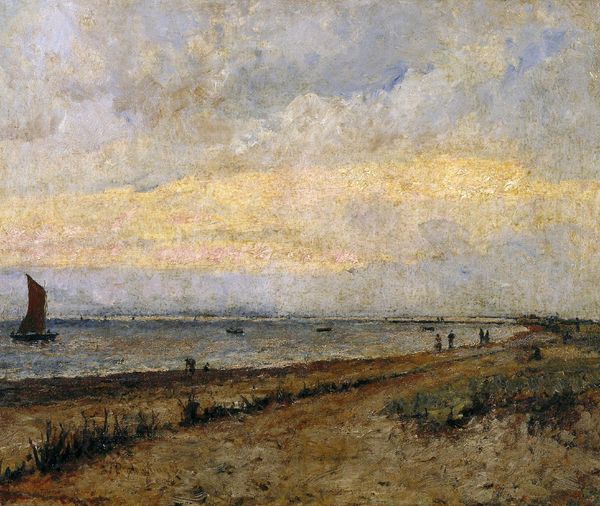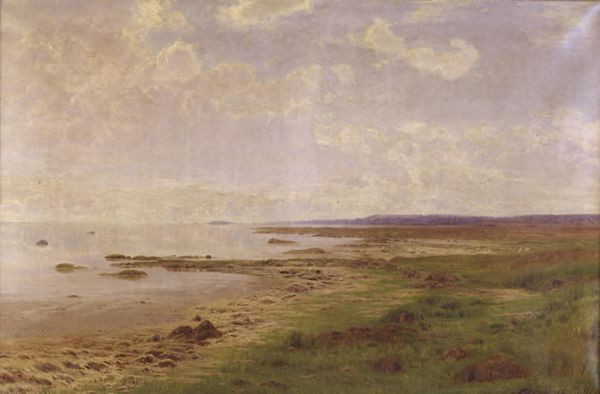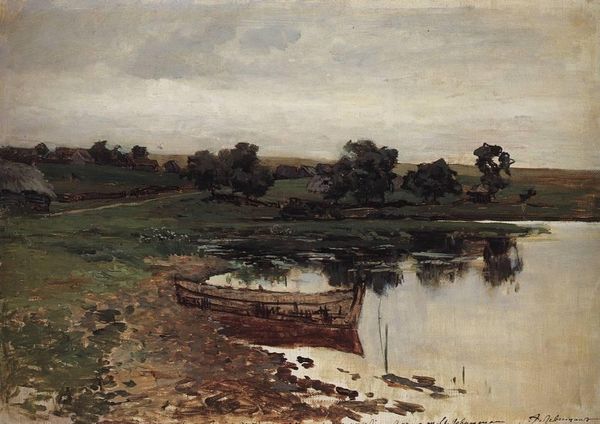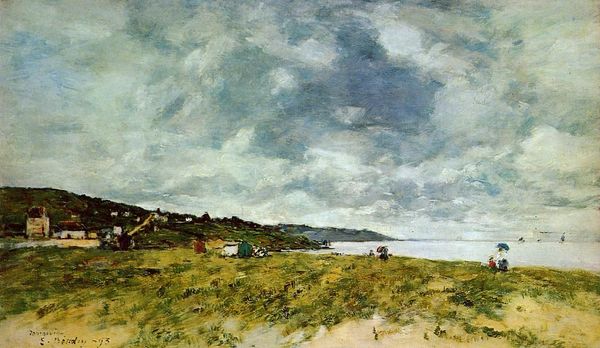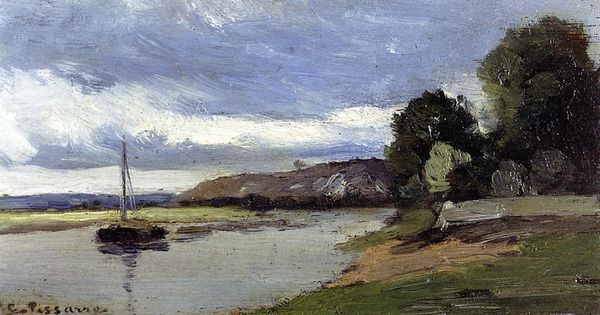
Copyright: Public domain
Editor: Here we have Isaac Levitan's "The Lake," painted in 1899 using oil paints. The water reflecting the sky and buildings gives it a very dreamlike, almost melancholic, feel. What do you see in this piece, professor? Curator: This work operates primarily through its formal structure. Consider the arrangement of light and shadow. The interplay between the textured brushstrokes of the clouds and the relatively smoother rendering of the water's surface creates a visual rhythm. How does the horizontal composition affect your reading of the piece? Editor: I hadn't really thought about it that way! I was focused on the reflection and how it blurred the distinction between the sky and the water. It feels very balanced to me, like two halves of a whole. Curator: Indeed. The balanced composition, combined with Levitan's delicate rendering of light, allows the viewer to engage with the artwork's surface qualities. It evokes a sense of quiet contemplation. Observe the subdued palette and the artist’s engagement with tone, color, and line to suggest meaning. Editor: So you’re saying the meaning is primarily found in the artistic elements and how they relate to each other, rather than any symbolic meaning behind the lake or the buildings themselves? Curator: Precisely. The brushwork and color, through careful structural decisions, suggest mood and depth. The way those elements construct the composition communicates feeling and invites interpretation. Editor: I see what you mean! Focusing on the technique helps to isolate what makes the painting powerful. I am seeing how Levitan uses the contrast and rhythm in color and tone. I guess it makes you notice what you feel more than what you see. Thanks for that perspective! Curator: My pleasure. It is through close, sustained looking that the artwork yields its intricacies.
Comments
No comments
Be the first to comment and join the conversation on the ultimate creative platform.

